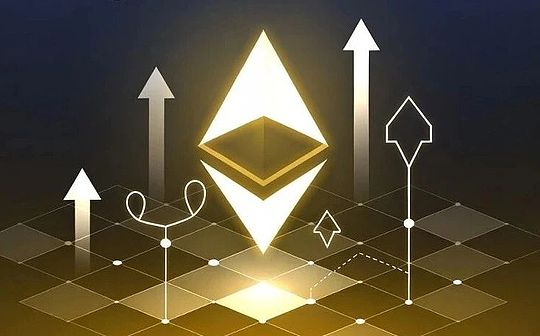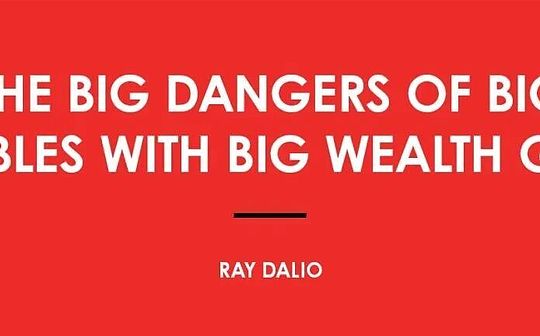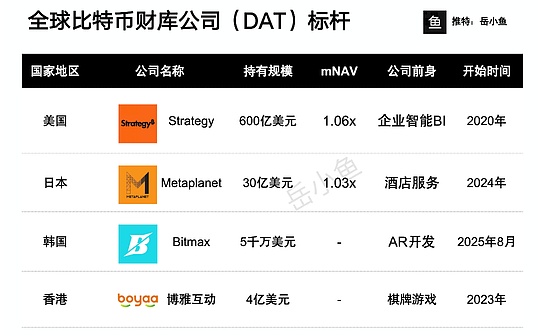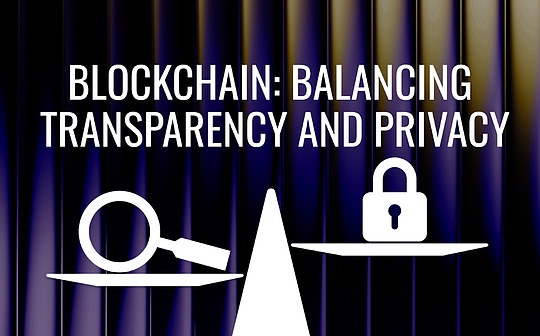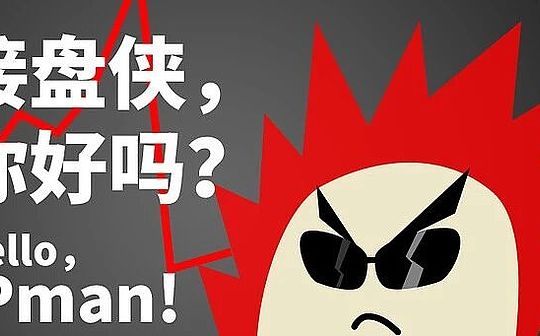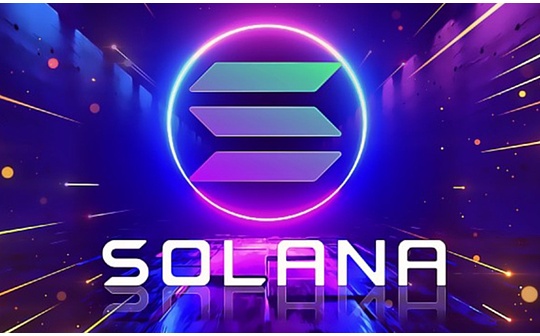
Author: Lostin Source: Helius Translation: Shan Oppa, Bitchain Vision
summary
-
The Solana network consists of 4,514 nodes, including 1,414 validators and 3,100 RPC nodes (685th Epoch).No single validator controls over 3.2% of the total staking.
-
Nakamoto Coefficient (NC)Indicates the minimum number of independent entities that can cause network activity to fail (the failure to generate new blocks) in the case of malicious collusion.Solana’s Satoshi coefficient is usually considered 19, but the actual value may be lower, because a single entity can run multiple validators anonymously without permission.
-
Solana’s validators are distributed in 37 countries and regions.The region with the largest number of validators is the United States, with a total of 508 validators.There are four regions with pledge share of more than 10%: the United States accounts for 18.3%, both the Netherlands and the United Kingdom 13.7%, and Germany accounts for 13.2%.
-
68% of the pledges are entrusted to validators in Europe and 20% are entrusted to validators in North America.Within the EU (excluding Norway, Ukraine and the United Kingdom), 50.5% of the pledges are distributed among the validators.
-
Verifiers are spread across 135 different hosting providers.The top two service providers are Teraswitch (a private U.S. company that hosts 24% of the staked share) and Latitude.sh (formerly Maxihost, a Brazilian low-cost bare metal server provider that hosts 19% of the staked share).
Client and development status
•Agave Client: The code base has 357 contributors.
•Firedancer Client: Developed by a small team led by Science Director Kevin Bowers, currently has 57 contributors.
•Jito Client: It is a branch of the Agave client, and the off-chain block space auction function has been added, which currently accounts for 88% of network stake.However, with the gradual introduction and integration of Firedancer clients, this share is expected to change significantly over the next 12 months.Solana and Ethereum are currently the only Layer 1 blockchain that provides multiple client implementations.
Major changes to Solana core components require a formal public proposal process (SIMD).Major agreement adjustments involving changes in economic parameters require governance voting.So far, three governance votes have been conducted.
Solana Foundation
Founded in June 2019, the Solana Foundation is a Swiss-registered nonprofit organization dedicated to supporting the development of the Solana ecosystem.The foundation consists of 60-65 full-time employees who manage funding programs, pledge projects and development tools.
In addition, Solana’s developer community has significant geographical diversity.In the last six-year hackathon “Radar”, 13,672 participants from 156 countries signed up, with the main participants coming from India, Nigeria, the United States and Vietnam.SuperTeam, a network that connects Solana creatives, developers and operators, now has 1,300 members in 16 countries.
What is decentralization?
Decentralization can be summarized as there is no single point of failure in the system.This multidimensional concept covers token distribution, the influence of key figures, permissionless network participation, development control, and software/hardware diversity.There is no unified standard for measuring the level of blockchain decentralization. Apart from the Satoshi Nakamoto coefficient proposed by Balaji, many indicators have flaws.In addition, discussions around blockchain decentralization often have political philosophical colors and often trigger ideological and even religious debates.
Solana has long been criticized and misunderstood by some people in the blockchain community about decentralization and censorship resistance.A recent example is the concerns expressed by former U.S. intelligence contractor and whistleblower Edward Snowden in his keynote speech at the Token2049 conference:
“Looking back at the Bitcoin white paper, I think you’re going to see a confrontational systemic thinking, and that’s exactly what we need to consider. A lot of people — I don’t want to name it, but like Solana — they’re holding a good idea and saying, ‘What if we centralize everything? It will be faster, more efficient, cheaper…’You have to think about the problem from an adversarial point of view, not a convenient, simple early situation.”
Like many Solana’s critics, Snowden did not provide data to support his point of view, although he was publicly invited to provide evidence.The next analysis will look at the level of decentralization of the Solana network based on data, highlighting its relative advantages in decentralization, and pointing out areas that need further improvement.
The dimension of decentralization
Through this report, we will take a quantitative and multifaceted approach to analyzing Solana’s decentralization and conduct analysis based on factual and publicly verifiable information.
We will evaluate the following areas:
-
Equity distribution
-
Geographical distribution of nodes
-
Diversity of hosting providers
-
Client software diversity
-
Developer diversity
-
Governance Processes and Entities
In due course, we will compare the metrics of the Solana network with those of other industries’ proof of stake L1 blockchain.Peer-to-peer networks serve as a benchmark only, providing a broader context for Solana’s decentralized journey and highlighting areas where it may lag behind or exceed expectations.
These comparisons should not be misunderstood as an attempt to claim one network is superior to the other.
In many cases, Ethereum provides the most useful benchmark as it is widely regarded as the most decentralized Layer 1 Proof of Stake blockchain.It is worth noting that Ethereum’s Genesis Block is more than twice as high as Solana, whose Genesis Block was generated in July 2015, while Solana’s Genesis Block was generated in March 2020.Decentralization is dynamic, and blockchains usually become more decentralized over time.Under similar conditions, it is reasonable to expect older networks to achieve higher levels of decentralization.
Equity distribution
Equity distribution in a blockchain network refers to how the network’s equity tokens are allocated among its validators.In well distributed systems, no single validator or small group holds a disproportionately large stake, reducing the risk of any entity’s undue influence or control over network consensus.
Balanced stake allocation ensures diversification of validators, thereby promoting decentralization, making it more difficult for any malicious actor to undermine the integrity of the network.As the network improves its recovery ability to a single validator failure, it also helps improve fault tolerance.
“You need a very large validator set, essentially the larger the validator set, the safer the network is, but on an academic level, the larger the node set, the easier it is to be guaranteed to be the few honest nodes in that setAlways have a minimum spanning tree that can be accessed from each other. This doesn’t even mean at the protocol layer; it’s actually people making calls. In fact, people can go into Discord or IRC or call each other with their phones. That’s what we solve for partitions andFind out what the problem is. The more people we have, the easier it is for us to ensure that partitions are not possible.”
– Anatoly Yakowenko, “Breakpoint 2024”
Running nodes on a Solana network requires no permission at all, and the minimum mandatory stake required to run as a validator is very low (1 SOL).The network natively supports delegated proof of stake (dPoS), consisting of 4,514 nodes, including 1,414 validators and 3,100 RPC nodes.
By equity, the two largest validators are operated by Helius and Galaxy, each holding approximately 3.2% of the interests.The minimum entrusted interests required to enter the top third super minority and the top two-thirds super majority are 4.4 million and 1.23 million SOL, respectively.

For clarity, the following table groups validators by entrusted interests.At the upper limit, 82 validators (5.87% of the total) hold more than one million commissioned SOLs.In contrast, at the lower limit, 825 validators (59.1% of the total) have less than 50,000 commissioned SOLs, most of whom are involved in the Solana Foundation Commissioned Program (SFDP), which aims to help small validators achieve rapid sustainability.develop.Approximately 72% of Solana validators benefit from SFDP support, which together account for 19% of the total equity.

Just as blockchain addresses are not equivalent to users, the number of validators does not reflect the true number of different entities operating the validators.As larger entities may choose to spread their stakes across multiple validators, the actual number will be lower.For example, Jito ( 1 , 2 ), Coinbase ( 1 , 2 ) and Mrgn ( 1 , 2 ) operate multiple validators.
There is no problem with operating multiple validators on a single entity; in fact, if the validators are distributed rather than co-located, this can enhance the network by increasing diversity in geographic and hosting providers.However, if these validators are configured the same as non-standard settings or firewall rules, there may be risks.Additionally, managing numerous validators on behalf of a large company or a project as part of the Verifier-as-a-Service model may bring further decentralization problems.
Nakamoto coefficient
In a proof-of-stake network, the Satoshi Nakamoto coefficient represents the minimum number of nodes required to control at least one-third of the total equity (i.e., a super minority).The higher the Satoshi Nakamoto coefficient, the wider the distribution of equity, so the higher the degree of decentralization.It can also be considered as the minimum number of independent entities that can maliciously conspire to cause activity failures, thus rejecting the consensus required for new block generation.PoS and Byzantine fault-tolerant blockchains require more than two-thirds of their equity to agree on the state of the network before they can continue to process transactions.
To determine the Nakamoto coefficient of Solana network, we sort the validator’s equity share from high to low and calculate the amount required to control one-third of the total equity.Solana’s Nakamoto coefficient historically ranges between the peak of 34 on August 13, 2023 and the current lowest of 19.This coefficient has been relatively stable in the past year.

Solana’s history of Satoshi Nakamoto
The Satoshi Nakamoto coefficient of Solana network is at a moderate level compared with the industry peer networks.These numbers do not take into account that individual entities can freely operate multiple validators anonymously, so the true Satoshi Nakamoto coefficient may be lower.

Geographical distribution of validators and interests
The geographical diversity of network nodes is crucial to reduce risks and improve network vulnerability.When too many validators are concentrated in one region, the resilience of the network depends on the regulatory frameworks in these specific jurisdictions.
Natural disasters such as earthquakes, floods, hurricanes and tsunamis are another risk.Such incidents can put pressure on the National Grid and can severely disrupt the operations of data centers, resulting in sudden power outages.Human threats such as war, cyberattacks and destruction of critical Internet infrastructure, including submarine cables, can also pose further risks and may endanger the stability of the network.
The Solana data analyzed in this section were collected from validators.app for the 685th period.The original data set is provided here in a spreadsheet format.These numbers only reflect pledged validator nodes and do not include non-staken RPC nodes.
Solana Number of Verifiers and Pledges (By Continent)
Grouped by continent, data showed that 632 Solana validators (46%) were located in Europe and 550 (40%) were located in North America.In terms of equity allocation, 68% of the equity is entrusted to validators in Europe and 20% is entrusted to validators in North America.50.5% of all equity is entrusted to validators operating within the EU (i.e., European equity except Norway, Ukraine and the United Kingdom).

Solana Validators and Continents Distribution of Equity
In contrast, Ethereum has similar equity distribution, but North America has a higher weight of 34.4%.

Ethereum validator and equity distribution by continent
Solana Verifier Number (by country)
The Solana network has a validator set in 37 different countries and regions.The largest concentration is in the United States, with 508 validators (37%) running in U.S. data centers, followed by 112 validators (8%) in the Netherlands and 111 validators (8%) in Russia.

Solana Verifiers Statistics by Country
Geographical distribution of Solana’s interests
This distribution is more balanced if the validator is weighted by equity.The four major jurisdictions hold more than 10% of the interests: 18.3% in the United States, followed by the Netherlands and the United Kingdom, both at 13.7% and Germany at 13.2%.

Geographical distribution of Solana staking
In contrast, Ethereum nodes are distributed in 83 different countries and regions, nearly half of which are located in the United States or Germany.

Ethereum nodes divided by country/region
Solana’s top 10 cities with number of nodes and equity
A more detailed analysis of the distribution of validators and commissioned stakes by city shows that Solana validators are distributed in 121 cities around the world.
Specifically, for the United States, validators are scattered across all major regions, covering a total of 35 cities.Most popular are Chicago (124 validators, 2.3% stake), Los Angeles (57 validators, 2.3% stake) and New York (32 validators, 3.5% stake).

Earlier this year, Anza employee Rex St. John proposed strategies to improve the geographical diversity of Solana validators, especially by expanding the presence of operators in the global southern region.
Several key challenges were identified:
-
Higher latency: Nodes in remote areas are difficult to keep synchronized with the network.
-
Bandwidth Cost: The bandwidth cost is very high in some regions
-
Regulatory restrictions: Different jurisdictions enact laws that limit the feasibility of operating blockchain infrastructure
-
Underdeveloped infrastructure: insufficient network and data center infrastructure.
-
Adverse taxes and tariffs: high cost of hardware equipment.
-
Talent shortage: Solana lacks local expertise and has limited access to funds required for pledge
Hosting provider
Ideally, the validator set should be hosted by a wide range of independent providers rather than relying heavily on a few centralized providers.This diversity is critical to reducing the risk of network disruption or censorship for any single provider.
A major event in 2022 involved German hosting service provider Hetzner, which accidentally removed Solana validators from its services, resulting in more than 20% of active interests (about 1,000 validators) offline within hours.despite this,Solana is still fully functioning, no activity issues occur.Most affected validators successfully migrated to new data centers within a few days, and almost all owed stakes were restored to online within a few weeks.

An email notification sent to Hetzner customers instructing them to delete the Solana client software from the server
Solana Verifier Hosting Provider (by interest)
The Solana validator set is spread across 135 different hosting providers.The two leading providers are Teraswitch (a private U.S. company hosting 24% of validators) and Latitude.sh (formerly Maxihost), a Brazil-based low-cost bare metal server provider with 19% verification.The company uses the company’s servers.The two providers together account for 43.4% of the shares.
Other popular hosts include French cloud computing company OVHcloud (which holds 8.65% of the share) and Lithuania’s Cherry Servers (which holds 8.45% of the validators).

Solana Verifier Hardware Requirements
Since Solana is a high-performance, high-throughput blockchain, it requires more stringent nodes than its peers in the industry.The hardware recommendations for Solana Verifier include the following key components:
-
CPU: 24 cores / 48 threads or more, 4.2GHz base clock speed or faster
-
Memory: 512 GB
-
Disk: PCIe Gen3 x4 NVME SSD, or later, total capacity of 2 TB or larger.High TBW
-
No GPU required
In fact, Solana’s bandwidth requirements make home operations impractical, so the validator operates primarily on bare-metal servers in dedicated data centers.
Solana Client Diversity
Solana was originally launched with only one validator client, developed by Solana Labs and written in Rust.Although the Solana Labs client is no longer actively updated, a fork called Agave is currently in use.Relying entirely on a single client implementation is an important carrier of centralization because it brings serious risk of software errors and may lead to active failures of the entire network.
Increasing client diversity has always been a top priority for the Solana community, and with the launch of Firedancer, that goal has finally been achieved.
Solana client implementation
Currently, multiple Solana client implementations are already in operation or under development:
-
Agave: A branch of the original Solana Labs client, written in Rust, maintained by Solana software development company Anza.
-
Firedancer: A complete rewrite of the original client by Jump Crypto in the C programming language.
-
Frankendancer: A hybrid validator that combines Firedancer’s network stack and block production components with Agave’s execution and consensus.
-
Jito: The Agave client built by Jito Labs has introduced block space auctions outside the protocol, providing more economic incentives for validators through tips.
-
Sig: A read-optimized Solana validator client written by Syndica using Zig.
In addition, Mithril is a client written in Golang, developed by Overclock, and can be used as a verification full node with low hardware requirements.
Having multiple full-time core engineering teams review each other’s code bases can greatly increase the likelihood of finding errors while promoting knowledge sharing and collaboration.
Anza engineer Joe Caulfield said in a recent interview:“We learned a lot from the Firedancer client team; some of the solutions they came up with were really smart.”
Both Agave and Firedancer have important vulnerability bounty programs.
Solana Client Diversity and Ethereum
Solana and Ethereum are the only two Layer 1 networks that offer multiple client implementations.Ethereum has at least five major software clients.The most widely adopted are Nethermind (written in C# with 45% usage) and Geth (written in Go with 39% usage).
On Solana, Jito client currently owns an 88% stake in the network.However, this pattern is expected to change dramatically over the next 12 months as new clients Frankendancer and Firedancer gradually introduce and integrate into the ecosystem.

Developer decentralization
existQuantitative DecentralizationIn this article, Balaji regards developer decentralization as a key factor in the blockchain ecosystem, emphasizing the importance of minimizing dependence on individual contributors and reducing “key person risks”.
All core client software on Solana is publicly hosted on GitHub under an open source license, allowing open access and community contributions.
The Agave validators maintained by Anza, a software development company founded in early 2024, play an important role in this field.Anza had about 45 employees when it was founded, accounting for about half of the previous workforce of Solana Labs.
In addition to managing Agave, the Anza team contributes to the wider Solana ecosystem through the development of programs such as token expansion, cross-border payment infrastructure and Solana licensing environment.
Number of contributors to Agave client codebase
The Agave client code base has 357 contributors and 26,408 commits, but the original commit count alone is not perfect and does not fully reflect the depth of individual contributions.It is worth noting that a small number of developers (mainly senior engineers and co-founders of Solana) wrote most of the submissions, as well as a small group of smaller contributors.

In contrast, Ethereum’s popular Geth and Nethermind clients exhibit similar contributor concentration patterns in larger communities.Geth has 1,098 contributors, while Nethermind has 142.More than half of all Geth’s commits are attributed to three core contributors.Similarly, two developers account for more than 50% of all Nethermind commits.
Firedancer client codebase contributors
The Firedancer client is developed by a small team led by Kevin Bowers of Jump, a well-known American high-frequency trading company, and currently has 57 contributors and 3,722 submissions.Given that Firedancer is a relatively new project (the first submission dates back to August 2022) and has only recently been online on the mainnet, the diversity of contributors remains limited.

Solana Ecosystem Developer
The geographical diversity of the developer community is evident in the wider Solana ecosystem.The biennial online hackathon, Solana, is one of the most involved hackathons in the world, playing a major role in cultivating many of today’s most successful Solana protocol and application teams, including Tensor, Drift, Jito and Kamino.
The recent Radar hackathon attracted 13,672 participants from 156 countries, with representatives from India, Nigeria, the United States and Vietnam being particularly prominent.

Radar Hackathon Registration Status (by country/region)
Superteam is a network of Solana creatives, developers and operators that has expanded to 1,300 members in 16 countries.Its localized chapters promote collaboration through activities and shared workspaces.Solana Allstars, an ambassador program run by Step Finance, has been a huge success in Nigeria, hosting more than 120 large gatherings in many regions
Governance
Governance is an important carrier of decentralization because it determines the way decisions are made within the network.This affects everything from protocol escalation to economic policies and community rules.Decentralized governance enhances the transparency, fairness and trust of the network.
Governance Voting and SIMD
The Solana Improvement and Development (SIMD) proposal is a formal document required for any significant changes to the Solana core components.A “significant” change is defined as a change that typically changes network protocols, transaction validity, or interoperability.
Non-substantial changes (such as small-scale code refactoring or objective performance improvements) are required.The proposal should document the basic principles of the function and sufficient documentation to understand the implementation.
While submitting SIMD is license-free and open to any developer or researcher, most SIMDs are submitted by a team of developers who are full-time dedicated to core protocol improvements.
There are two types of proposals:
-
Standard Proposal: Affecting Solana’s core capabilities (such as consensus, networking, and API interfaces)
-
Metaproposal: Solve processes or guides outside of the code base
SIMD Process
SIMD usually goes through creative review, drafting, reviewing and acceptance phases.The formal review is conducted publicly on GitHub, with proposal authors responsible for collecting feedback from relevant core contributors, and then they decide whether to accept, modify or withdraw the proposal.
Authors are not obliged to implement their advice, but they are usually advised to do so because it is the best way to ensure successful completion.
If the proposal is accepted, it will usually contain tracking issues related to the functional implementation and may need to be activated through Solana’s functional gating mechanism.Functional gating is first activated on the era boundary of the test network, then activated on the development network, and finally activated on the main network.
Discussions on improvements involve the following occasions:
-
SIMD (Solana Improved Documentation) Github Repository
-
The sRFC (Solana Comments) section of the official Solana forum
-
Solana Technology Discord
-
Spread social channels, including X (formerly Twitter) and Telegram
Solana Governance Voting Process
Major protocol changes SIMDs (especially those that affect economic parameters) need to be subject to governance votes.The Solana Governance Voting Process is a relatively new initiative led by long-term members of the validator community, focusing only on key issues to maintain engagement and avoid governance fatigue.
So far, three such votes have been conducted:
-
Initial consultation and voting was conducted in October 2023 (shareholding ratio is 14.3%)
-
SIMD33 Timely Voting Points in April 2024 (53% Equity Participation Rate)
-
SIMD96 will be charged full priority to validators in May 2024 (51% equity participation rate)
Voting is done by depositing the tokens into each verifier’s identity account, each of which receives tokens proportional to their active shares in the lamport.
To vote, the validator needs to transfer these tokens to one of several designated public keys corresponding to the available voting options, including the abstention option.Once voted, it cannot be changed.
In this structure, SOL token holders engage in indirectly only by delegating their staked SOL to validators who vote to choose to match their values or preferences.
Governance benchmarks
Solana is one of only four Class AA assets to be evaluated in the top 40 digital assets evaluated by environmental, social and governance (ESG) standards, according to a benchmark report released earlier this year.The report’s governance rating evaluates factors such as stakeholder engagement, transparency and decentralization, with Solana ranking fourth in the L1 blockchain.

L1 Digital Assets for Blockchain ESG Benchmark Governance Rating
Solana Foundation
Founded in June 2019, the Solana Foundation (SF) is a Swiss-registered nonprofit organization dedicated to the decentralization, adoption and security of the Solana ecosystem.SF’s initial funding is 167 million SOL tokens, which oversees funding for grants, its entrusted programs and developer tools.It controls official brand equity, social media accounts, websites and trademarks.
The Foundation has a relatively capable team consisting of 60-65 full-time staff, led by Executive Director Daniel Albert and President Lily Liu, and is supervised by the Foundation’s Board of Directors.
SF’s mission is to foster a scalable and self-sustainable Solana network focused on education, research and ecosystem development programs.SF organizes large Solana events, including Hacker Houses and annual Breakpoint conferences, to promote developer engagement and community building.
The SF developer relations team is responsible for maintaining official documents, social channels and developer education.In January 2024, SF handed over the management of the flagship hackathon to Colosseum, a new standalone accelerator co-founded by former SF growth director Matty Taylor.
“Our job is to solve our own problems. Find scalable ways to support networks and ecosystems and then get them away,” Dan AlbertIt was noted in a recent debate that this suggests that the long-term goal of SF is to build a network that can self-sustain itself without supervision.
in conclusion
As mentioned in this article, the degree of decentralization of the Solana network is comparable to or exceeds that of industry peers in many key metrics, including the Satoshi Nakamoto coefficient, the geographical distribution of validators and interests, the degree of decentralization of developers, and governance benchmarks.Client diversity remains a notable exception, and the new Firedancer client is designed to address this issue.
There are several opportunities to enhance Solana’s decentralization:
-
Explore options for assigning SF responsibilities to multiple organizations
-
Increase transparency in foundation spending and allocation of grants
-
Develop initiatives such as the Solana State to increase geographical diversity
-
Reduce voting costs, which is the biggest expense for validator operators
-
Explore strategies to reduce the need for validator data outflows; these are particularly expensive for operators outside the EU and the US
-
Encourage more people to actively participate in governance voting
-
Expand Solana’s core contributors and research community to strengthen network development
The validator set is still somewhat concentrated in the United States and the European Union and relies on a limited number of hosting service providers.While this challenge is not unique to Solana, it highlights Solana’s potential for improvement as one of the less centralized blockchains at the validator level.

